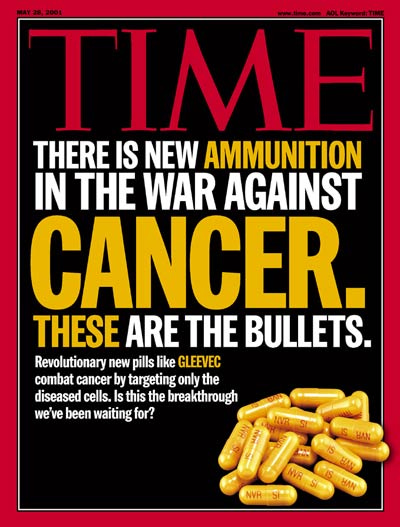In defense of pharma
you don't want to know how much money it takes to bring a drug to market
At a martini lunch with a Radioligand Therapy Senior Exec, I asked, “Am I gonna have to write the social value of pharma thinkpiece?” I see a clear divide between those shaping the industry and those fearing it, often from a lack of information.
The pharma finesse to investing, innovating, and implementing health technology is why I joined the field. It’s a necessary (albeit not sufficient) player for collective health gains. To me, the pharmaceutical industry is a net social good, but 61% of Americans disagree: they trust lawyers, oil and gas, and even The Feds more than they trust pharma. I can tell you that over my ~10-year career in the industry, I’ve worked with reliable, rigorous, and compassionate people who care a lot about improving people’s quality of life ASAP, while pursuing future cures. This is true, but I doubt anecdotes alone are enough to convince you. Instead, I’ll guide you to the facts and welcome an open dialogue.
Drugs save lives
Forgive me for starting with the obvious. Pharmaceutical innovation can help us live longer by turning deadly illnesses into chronic, manageable conditions, curing diseases, or preventing them altogether.
Pure cost-effectiveness health technology assessment countries only pay for drugs that show quality-of-life improvements and meet quality-adjusted life year thresholds. You already know about the health benefits of GLP1 inhibitors, because I, and everyone else on here, have written about them. They’re disrupting the obesity treatment landscape and are directly responsible for cardiometabolic improvements (think: heart disease, kidney disease, diabetes) and impulse control/desire. Heart disease is the leading cause of death in the US + worldwide, responsible for 41% of US deaths in 1970, down to 22% of US deaths by 2022. A Health Affairs analysis attributed about half of that heart disease mortality decline to pharmaceuticals (Thank baby Jesus for statins!). That same analysis linked pharmaceutical innovation with 76% of mortality improvements for patients living with HIV. Drugs like iptacopan may delay kidney failure, improving quality of life with a pill as an alternative to dialysis/ kidney transplant.
Also consider cancer, the second leading cause of death in the US + globally. Chronic Myeloid Leukemia (CML) is no longer a death sentence thanks to imatinib. This drug was so iconic that it made the cover of Time. Imatinib was a massive W for CML care, illustrated by a major glow-up in US long-term survival from the 90s (before imatinib approval) vs early aughts, after imatinib FDA approval (2001).
Overall, the US observed a decline of 34% of cancer deaths from 1991 to 2022, avoiding about 4.5 million expected deaths due to earlier detection and improved treatment options (both areas where pharma contributes) and lower smoking rates. A 2020 study published in the Journal of Medical Economics found a correlation between cancer medicines approved in the US between 2000 and 2016 and the prevention of 1.3 million cancer deaths for the top 15 most common cancers. In the UK, half of the people diagnosed with cancers in 2018 were expected to live 10 years or more vs only 24% in the 1970s.
One more for good measure: a World Health Organization analysis found vaccines yielded a 40% reduction in global infant mortality.
Pharma firms invest heavily in R&D
Developing new drugs is a team effort between private, academic, and public institutions. Pharma carries the team, investing the most in drug development. But you don’t have to take my word for it. Harvard health economist Amitabh Chandra is one of my favorites in the game. Are you allowed to have favorites? There’s room in my brain for them all. My 2016 MPH health econ professor at Columbia often cited Chandra’s work, even joking about how his health economist hot takes on Twitter made him unfit for political office. Anyway, Chandra led the most comprehensive global biopharma R&D investment assessment to date, finding that it totaled over $276 billion in 2021. US companies lead the pack, making up 50% of global R&D investment. These investments create life-altering medications and advance scientific and medical progress. Considering we get about 40-50 successful drugs approved a year, Chandra extrapolates that it takes more than $5B to bring a (1) drug to market. We need incentives like IP and patent protections because pharma isn’t as profitable as people think. Most drugs fail. We exhibit Health Innovation Fan Behavior.
Science is an iterative art form
Pharma investment refines and calibrates scientific learnings to improve the patient experience. Each novel drug builds on earlier research in baby steps, big leaps, or pivots. Advances in companion diagnostics that support targeted, personalized medicine raise all boats, not just the drug they’re intended for. In health economics, these are seen as valuable scientific spillover effects. Even when drugs fail, we learn, share findings, and propel the field forward. Sometimes drugs get repurposed. Minoxidil was originally developed for high blood pressure, but was discontinued due to excess hair growth. Now, men and women use it for hair growth. Pfizer developed sildenafil to treat angina (chest pain from reduced blood flow to the heart). It wasn’t as effective as they’d hoped, but men reported a remarkable side effect: significant and extended erections. We now know this drug as Viagra. In other cases, pharmaceuticals offer real options value (ROV)by keeping patients alive long enough to benefit from future innovations/potential cures. The bigger a drug’s survival benefit, the higher its ROV.
It’s good for the economy!
If social welfare as a basic concept doesn’t sway you, perhaps economic benefit will. Globally, the pharmaceutical industry directly contributed $2.3 billion to the GDP in 2022. Pharma is also a job creator, supporting 75 million jobs worldwide in 2022, 7.8 million were employed by the industry directly, and 1.1 million were involved in R&D.
Quantifying the social burden of disease is hard, but I like WifOR’s method. They consider paid and unpaid work as well as caregiver/family burden, and calculate the social benefits of pharmaceutical innovations. Their research has found that MS drugs added $6 billion in economic value for Brazil, Canada, China, France, Germany, Italy, Japan, Spain, the UK, and the US from 2017-2023, with a projection of $27 billion by 2032.
As cancer incidence rises, so will the economic burden as health budgets shrink, but pharma is invested in long-term social health gains. Estimates show cancer is on track to cut $25.2 trillion from the GDP between 2020 and 2050. Improving cancer care and patient outcomes benefits our economy and social welfare. Research from the RAND Corp showed that investing $40 million in women’s lung cancer research could yield a 1200% return. From a study of 11 cancers, we learned that every dollar invested in cancer diagnosis and treatment has a $8 ROI. A healthy workforce benefits us all!
Okay, wrap it up SEM…
The pharmaceutical industry is a necessary and eager partner in solving health system challenges. Consider them in your future public-private partnerships. That’s all for me on this at the moment, but I look forward to reading your thoughts in comments, DMs, emails or texts.
Love you, mean it.
xxsem


